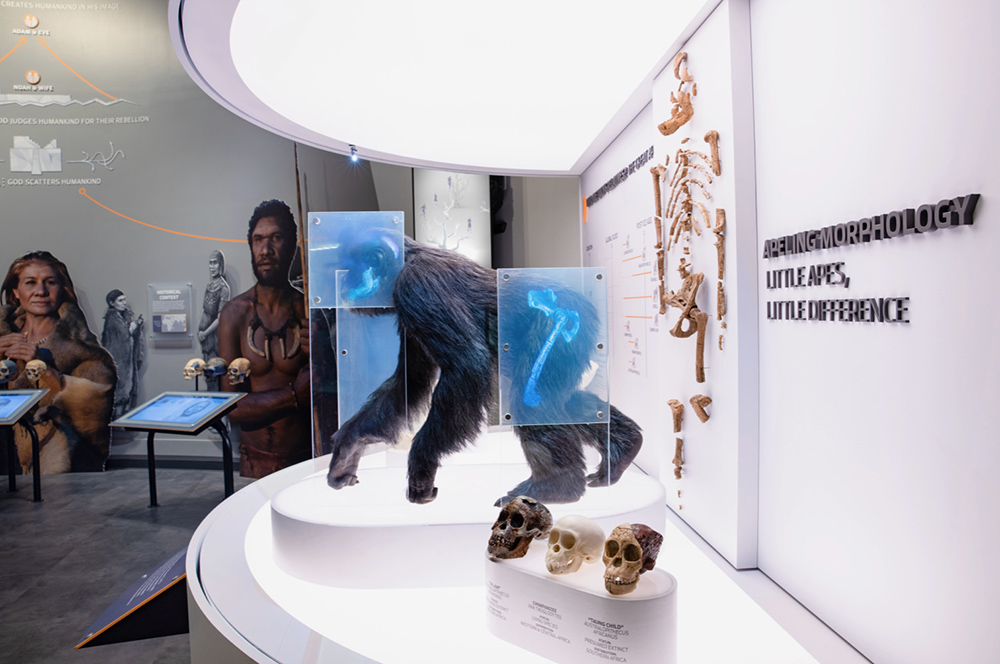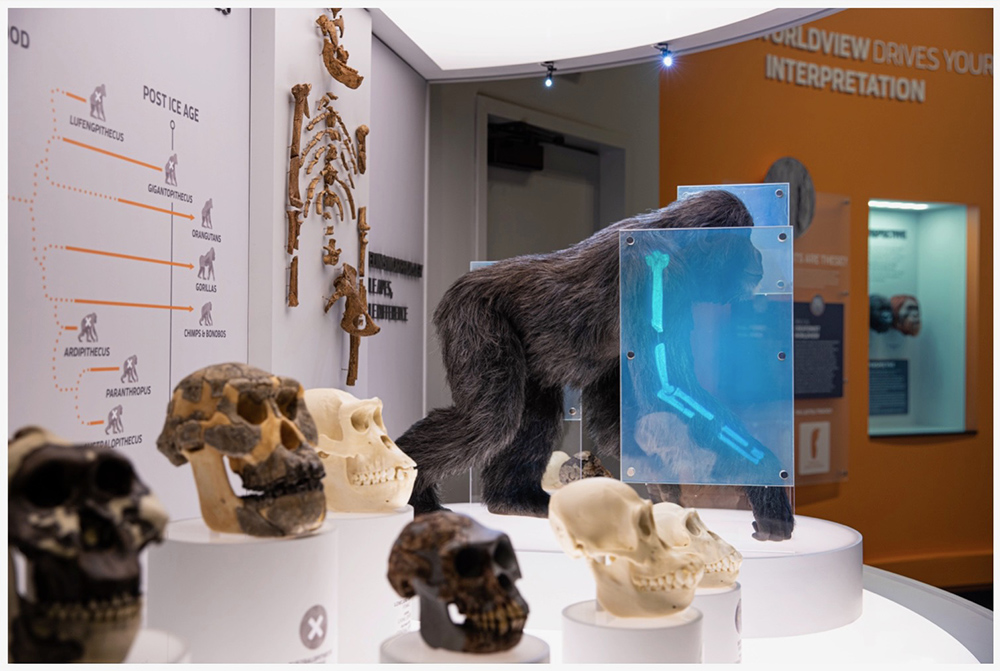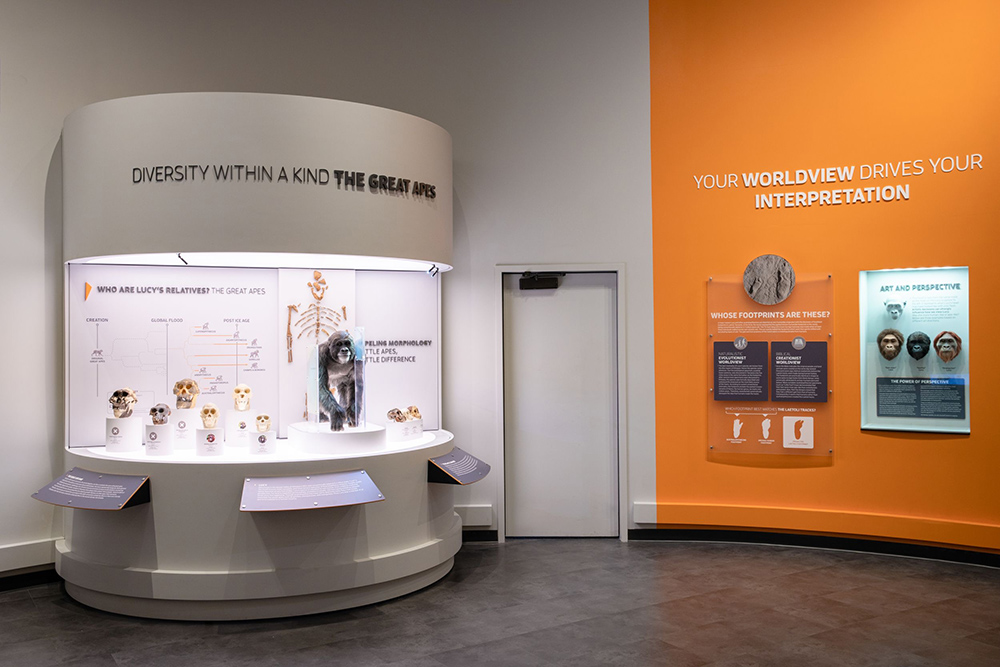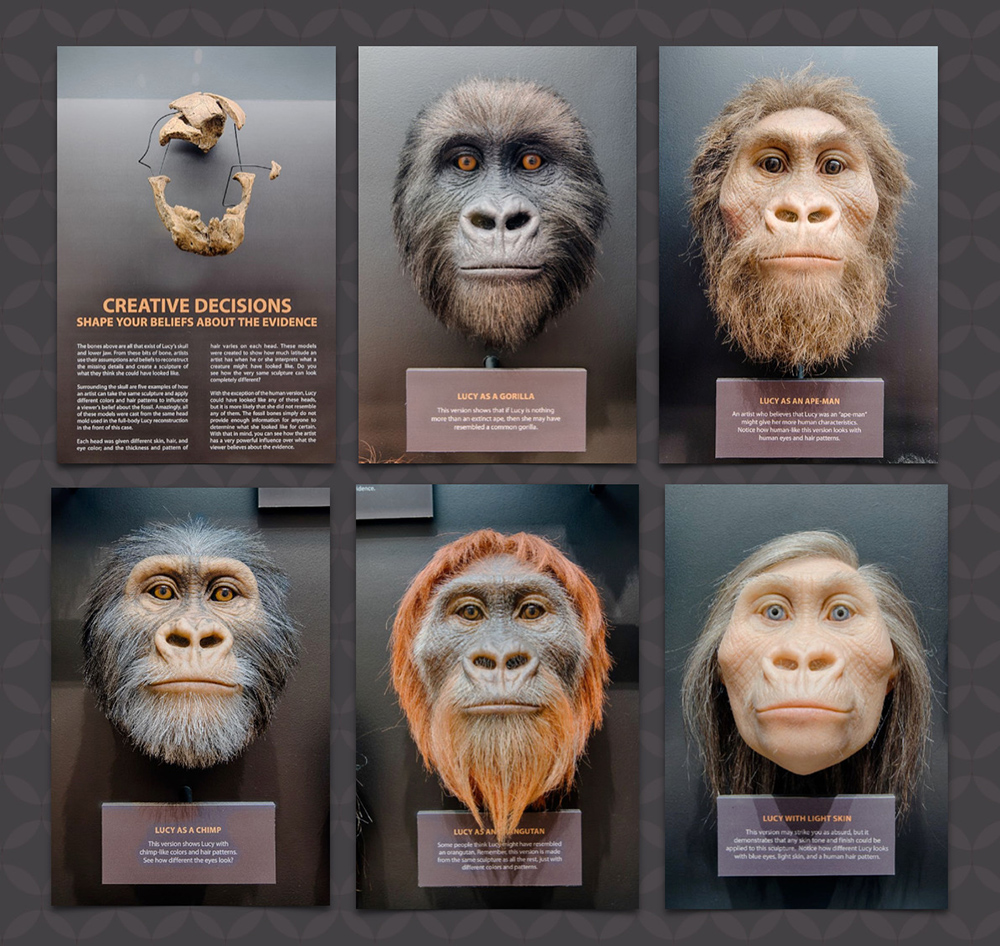Was Lucy Our Ape-like Ancestor?
on February 15, 2024When you visit the Creation Museum, you will find that the first series of exhibits teaches people how to think. We help visitors understand that everyone has a worldview—a way of thinking. And ultimately, there are only two foundations that determine one’s worldview—God’s Word or man’s word. Your worldview then determines how you interpret the evidence of the present in relation to the past.
One of the examples we use to help explain this has been one of the pride and joys of the evolutionary world—“Lucy”! Lucy was once considered to be a “missing link” in human evolution. Now she’s considered a close relative. But, Lucy is not a relative of any human as Lucy was a member of the ape kind!
Here is an excerpt from the signage at the Lucy exhibit:
Art is communication. Even when words are absent, it has a great capacity to convey meaning. When you look at a piece of art, remember that it speaks for the artist who crafted it to tell a story.
Consider these depictions of australopithecine heads, cast from the same mold as the “Lucy” figure. Despite looking very different from one another, their sculpted details are identical. Only arbitrary details set them apart—things like hair, eye, and skin colors, as well as hair length and coverage.
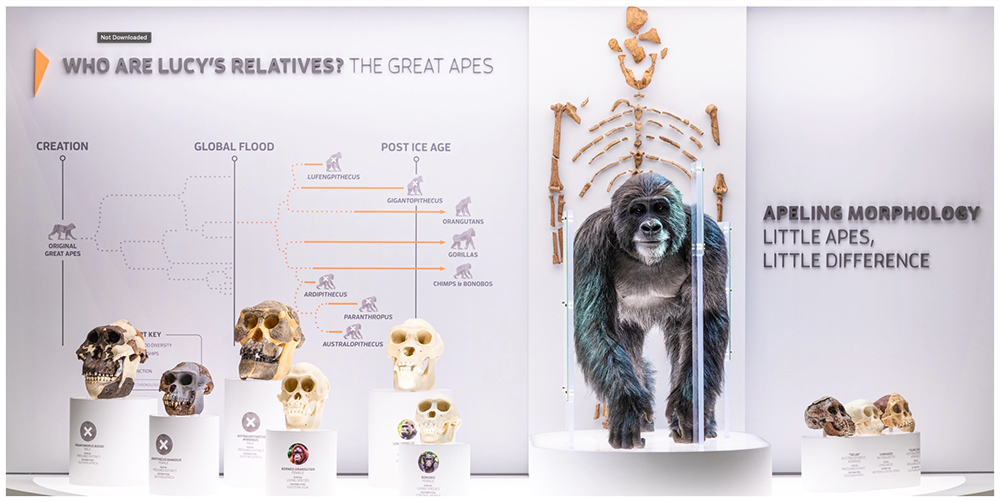
Whether filling in missing bits of skull, surveying a bony surface for muscle attachment points, or choosing skin tones based on specimen location, degrees of assumption attend every stage of reconstruction. Ironically, the more superficial elements—things that represent the biggest unknowns—are often most effective in conveying a broader narrative.
For example, artists who wish to communicate that australopithecines were human relatives usually add human eyes and hair patterns. Those who wish to show that australopithecines were more like other apes will take inspiration from familiar varieties like gorillas, chimpanzees, or orangutans.
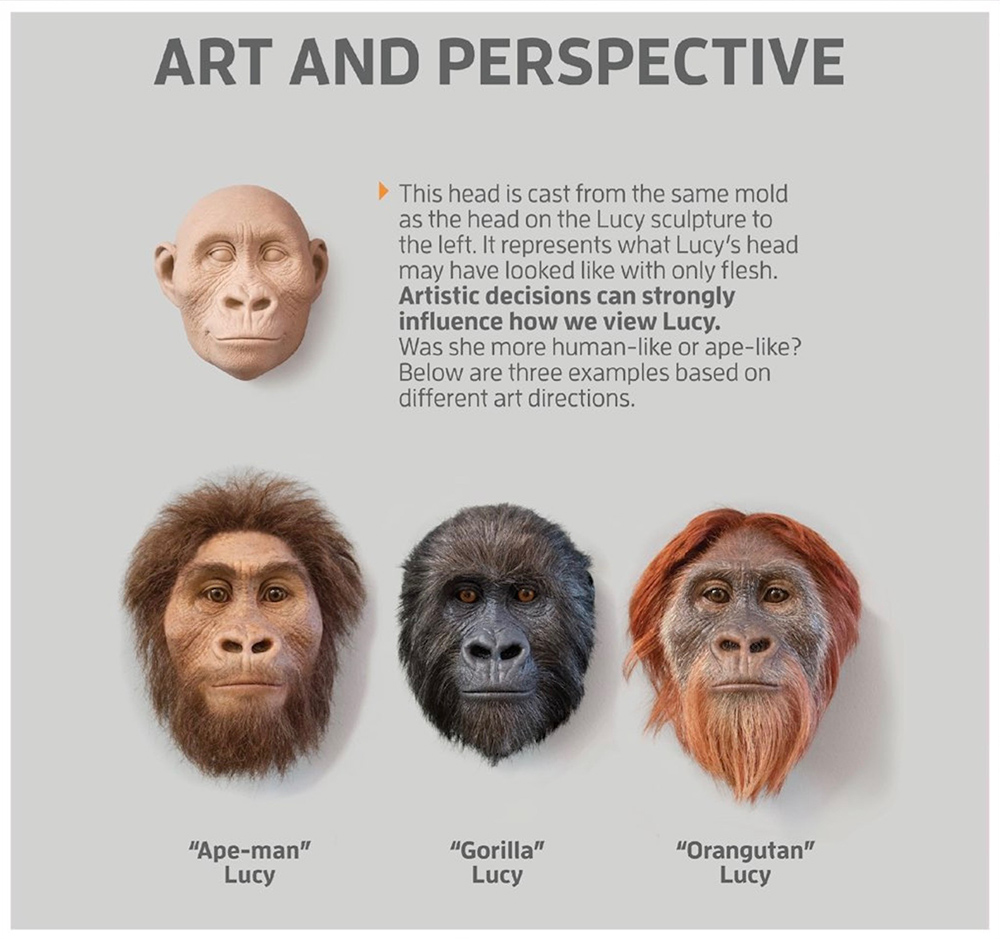
There is nothing wrong with using art to communicate. But these examples demonstrate at least two important things: how art can be used to shape public opinions, and how preconceived ideas can significantly impact art. Art, like the tongue or written words, can be a powerful tool for good or ill.
Art always speaks, so ask yourself what it is saying.
Of course, evolutionists use art to try to indoctrinate people in their evolutionary story, in this case, that Lucy was a supposed relative of humans. Now, when you look at the actual evidence found for Lucy—a number of bones—what you observe is totally consistent with Lucy being of the ape kind, not a relative of humans.
Start planning your visit to the Creation Museum today, and learn more about how our worldview shapes the way we interpret the things around us.
